Ten Thousand Auspicious Omens for the New Year Album (歲朝衍萬圖冊 / Suì Zhāo Yǎn Wàn Tú Cè)
—A Qing Dynasty Masterpiece by Dai Quheng (戴衢亨, 1755–1811)
Overview
This 14-panel silk-scroll album, housed in Taipei’s National Palace Museum, celebrates the arrival of the Lunar New Year through poetic landscapes and imperial symbolism. Painted by Dai Quheng, a renowned Qing scholar-official and calligrapher, the work pairs each scene with a numerical title (e.g., One Branch of Early Spring, Two Grains Nurtured by Snow) and poetic inscriptions by the Jiaqing Emperor (r. 1796–1820). Created in 1805, the album merges meticulous gongbi (工笔) brushwork with Daoist-Confucian ideals of cosmic harmony and agrarian prosperity.
Translation & Cultural Context
Album Structure
Each panel’s title begins with a numerical sequence (1 to 100 million), symbolizing infinite renewal and the cyclical nature of time. Below are selected highlights:
- 一枝春早 (First Blossom of Spring)
- Translation: A plum branch blooms early, heralding spring’s arrival.
- Jiaqing’s Poem: “Gentle winds caress southern boughs; / Spring’s heart awakens the plum’s quiet grace. / A single fragrance spills beyond the gate— / Snow’s essence enriches its vibrant face.”
- Symbolism: The plum (梅, méi) symbolizes resilience in adversity, while early blossoms represent hope and renewal.
- 二麦培霙 (Two Grains Nurtured by Snow)
- Translation: Wheat sprouts thrive under snow, a promise of future harvests.
- Cultural Note: Snow (霙, yīng) is seen as a “winter nutrient,” vital for nourishing crops. The scene reflects the Confucian ideal of agrarian diligence.
- 三阳肇泰 (Three Suns Herald Prosperity)
- Translation: Three suns rise, symbolizing the San Yang (三阳)—Daoist trinity of heaven, earth, and humanity in harmony.
- Philosophical Link: The “Three Yangs” concept originates from the I Ching (易经), representing cosmic balance and the start of spring.
- 六街喜爆 (Six Streets Alight with Firecrackers)
- Translation: Lanterns and firecrackers illuminate the capital’s streets during the New Year.
- Historical Context: Firecrackers (喜爆, xǐbào) were believed to ward off evil spirits, while lanterns symbolized communal joy.
- 亿兆同熙 (A Billion Lives in Harmony)
- Translation: A utopian vision of universal peace under the emperor’s benevolent rule.
- Jiaqing’s Poem: “I long for the simplicity of ancient sages; / May all realms bask in shared prosperity. / This painting shames my governance— / When will true unity grace humanity?”
- Imperial Propaganda: Reflects the Qing court’s mandate to unify heaven’s will (天意) with earthly governance.
Artistic Significance
- Gongbi Technique:
- Dai’s brushwork combines delicate ink washes with mineral pigments (e.g., malachite for foliage, cinnabar for lanterns). The plum blossoms’ petals are rendered with translucent layers to mimic frost.
- Seasonal Symbolism:
- The album aligns with the 24 Solar Terms (节气), a traditional agricultural calendar. For example, First Blossom of Spring corresponds to Lichun (立春, “Start of Spring”), marking planting rituals.
- Philosophical Themes:
- The numerical progression (1 to 100 million) mirrors the Daoist concept of Wanwu (万物, “ten thousand things”), emphasizing nature’s infinite diversity and cyclical renewal.
Artist Background
Dai Quheng (戴衢亨) was a Grand Secretary under the Jiaqing Emperor and a celebrated calligrapher. A native of Jiangxi, he rose to prominence by winning the imperial examination’s top rank (Zhuangyuan, 状元) in 1775. His works, characterized by scholarly elegance and technical precision, often served as diplomatic gifts to tributary states.
Global Parallels
- Comparative Art:
- Similar to Japanese kachō-ga (花鳥画) in seasonal themes but distinct in its imperial narrative and numerical symbolism.
- Contrasts with European Baroque still lifes (e.g., Rachel Ruysch) by prioritizing philosophical depth over material opulence.
Legacy & Accessibility
- Digitization: High-resolution scans are available via the National Palace Museum’s digital archive.
- Exhibitions: Featured in Cosmic Order: Qing Dynasty Court Art (2024), highlighting its role in imperial propaganda.
References
: National Palace Museum archives on Dai Quheng’s works.
: Scholarly studies on Qing Dynasty imperial symbolism.
Note: For virtual viewing, visit the National Palace Museum’s platform: https://theme.npm.edu.tw.
Full Translation of Titles & Poems
(Selected Highlights)
七种蔬香 (Seven Vegetables’ Fragrance)
- Translation: A rustic feast of seven spring vegetables, symbolizing health and abundance.
- Cultural Note: The “Seven Vegetables” (七草) tradition, borrowed from Japanese Nanakusa-gayu, was adapted by the Qing court to celebrate agrarian roots.
九曲恬波 (Nine Curves of Calm Waters)
- Translation: The Yellow River flows peacefully, ensuring safe grain transport.
- Historical Context: River management was central to Qing governance, reflecting the emperor’s role as “Son of Heaven” balancing nature and human effort.

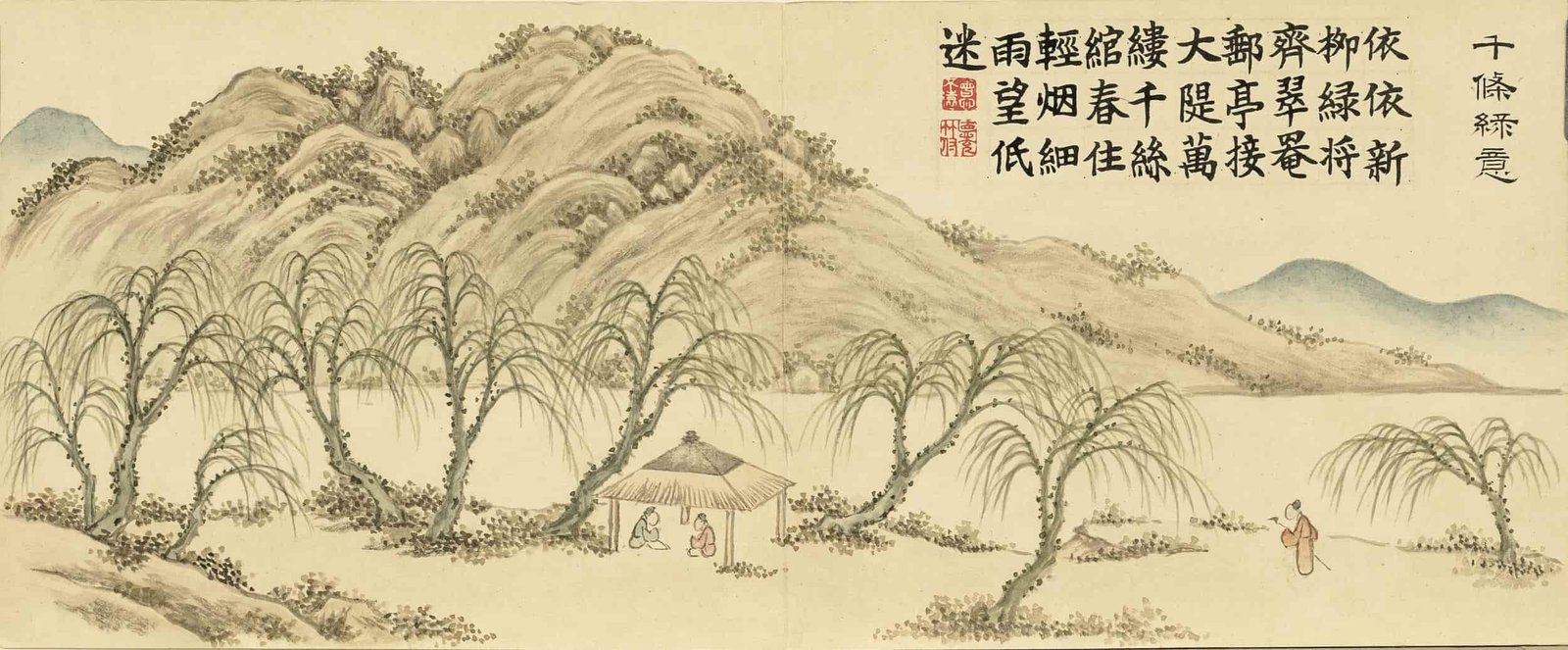
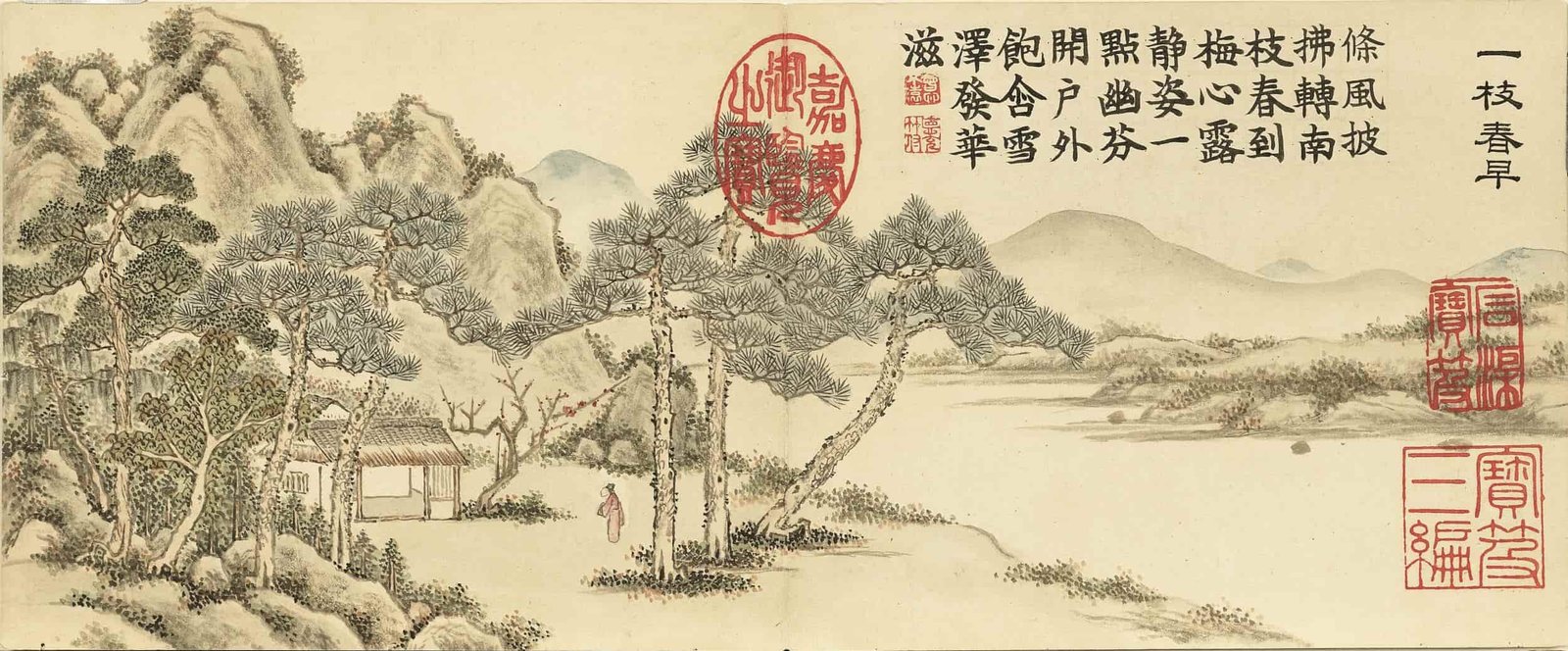
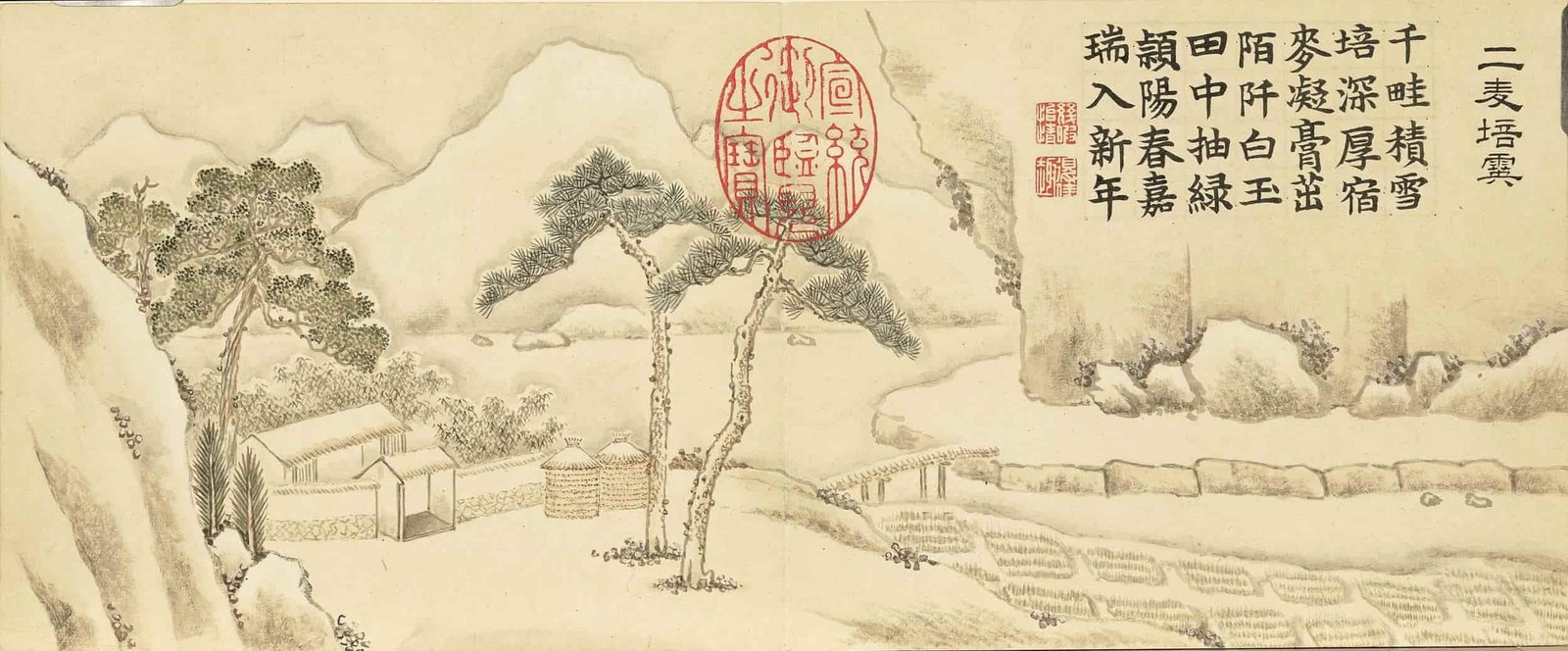
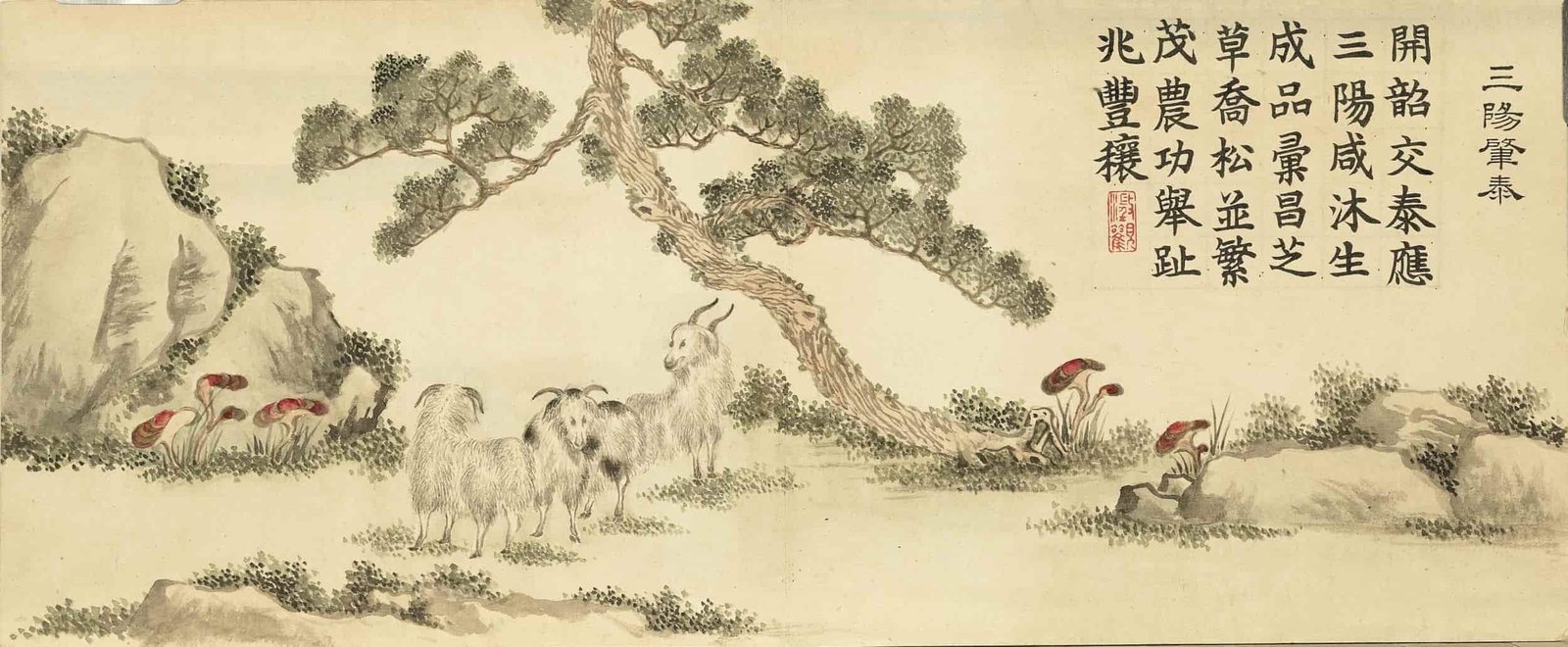
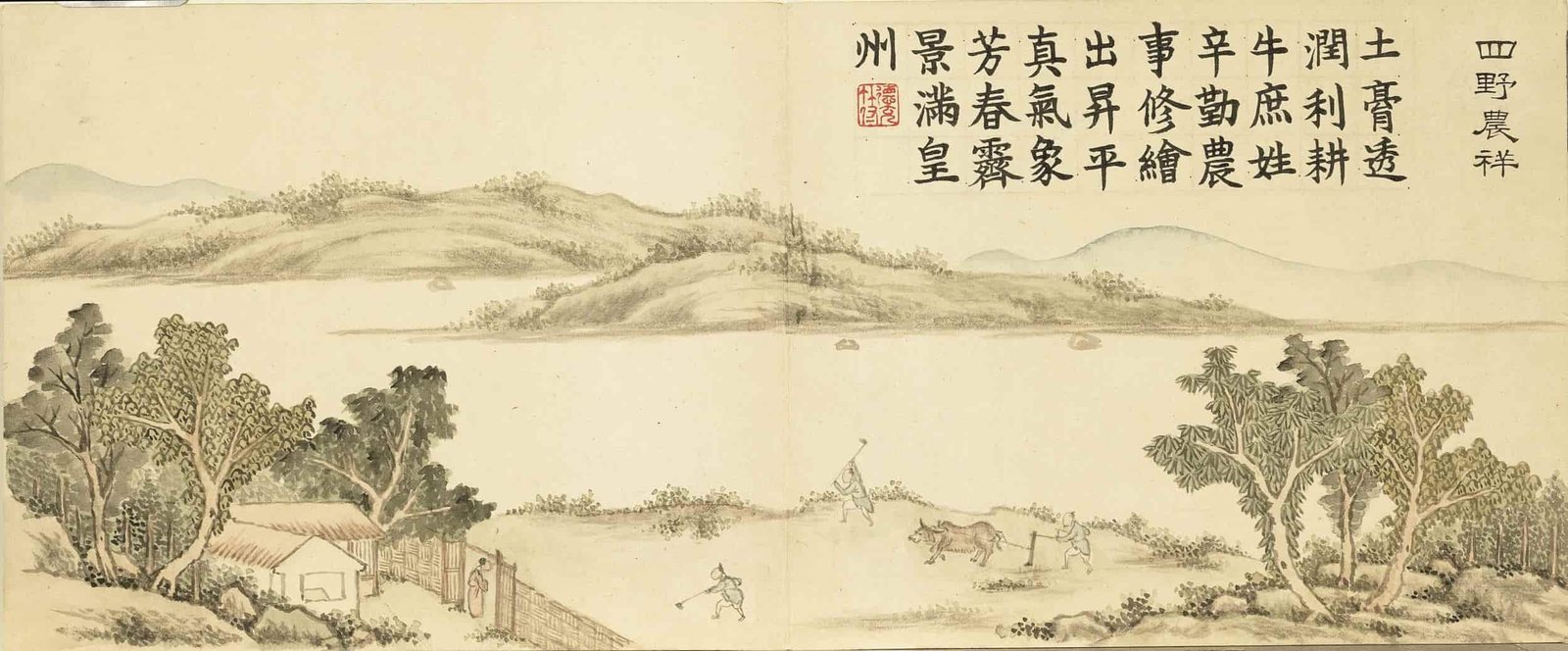
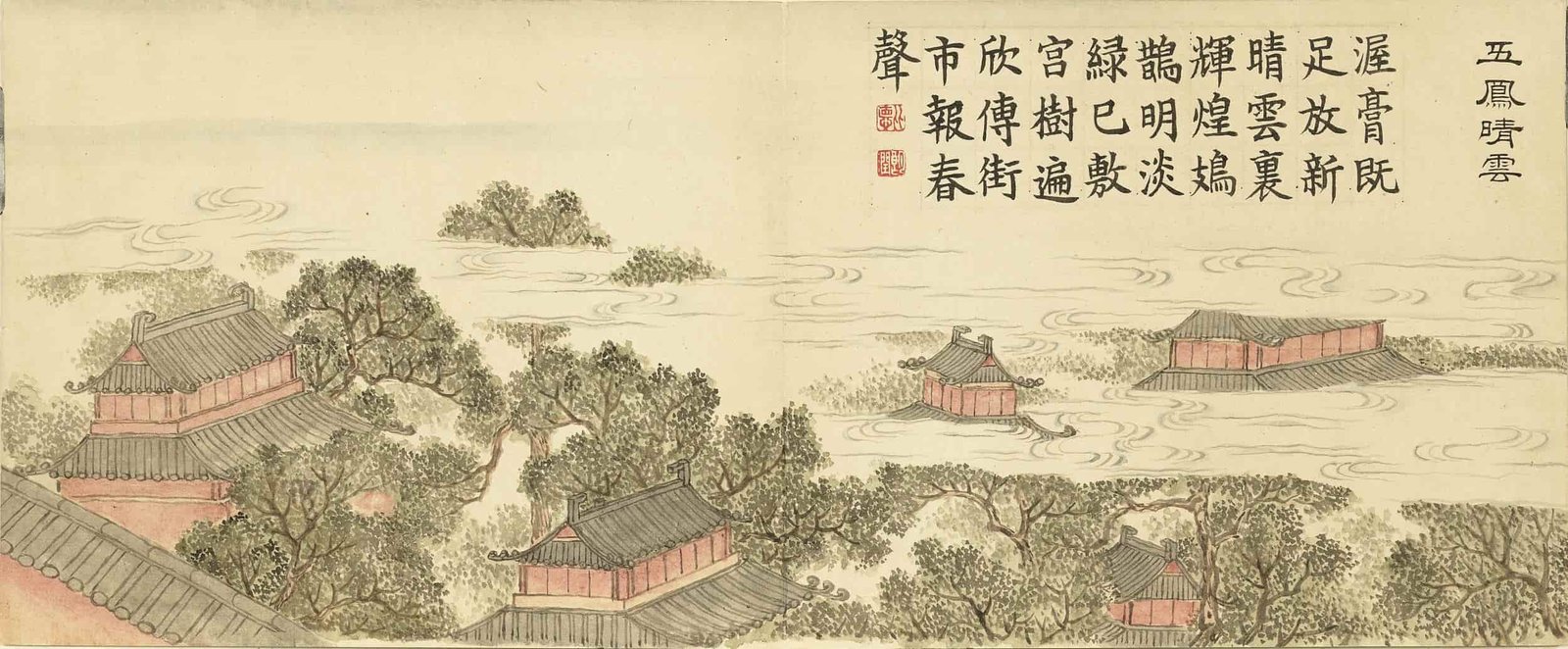
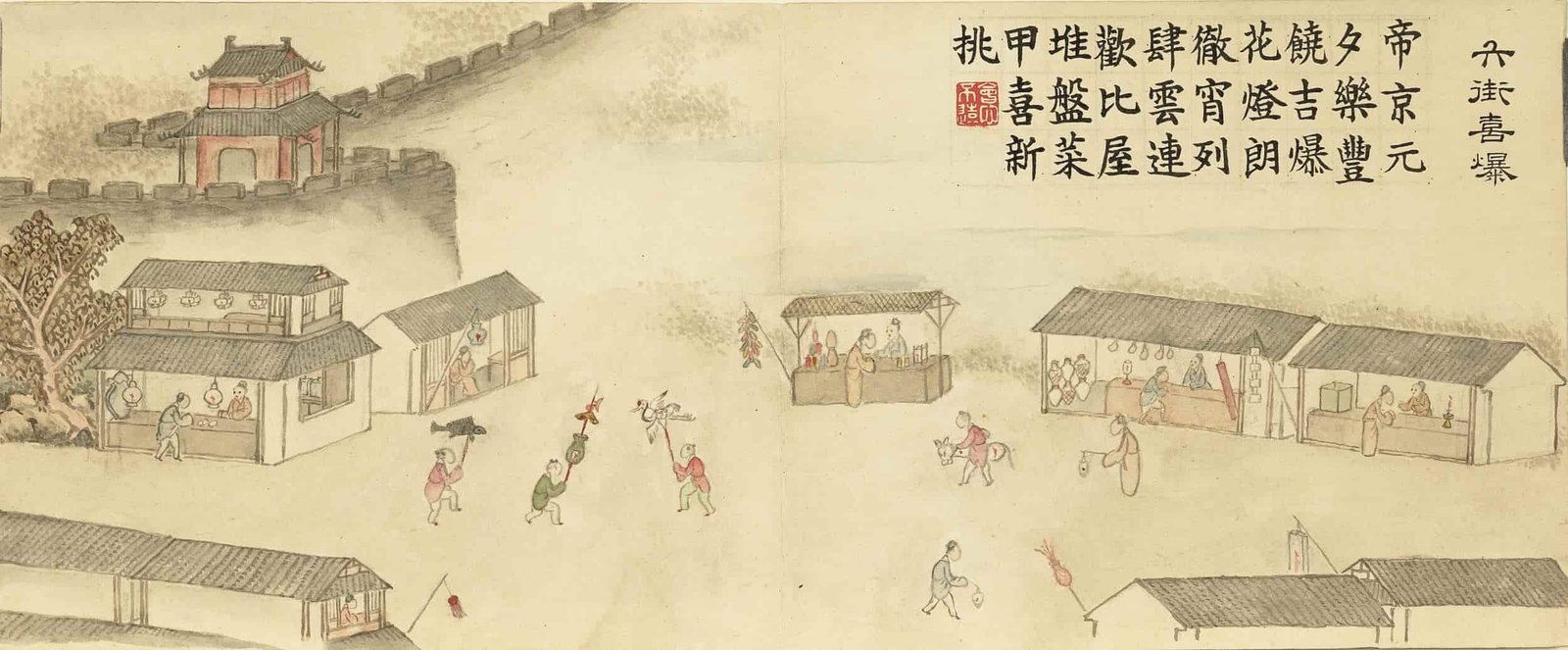
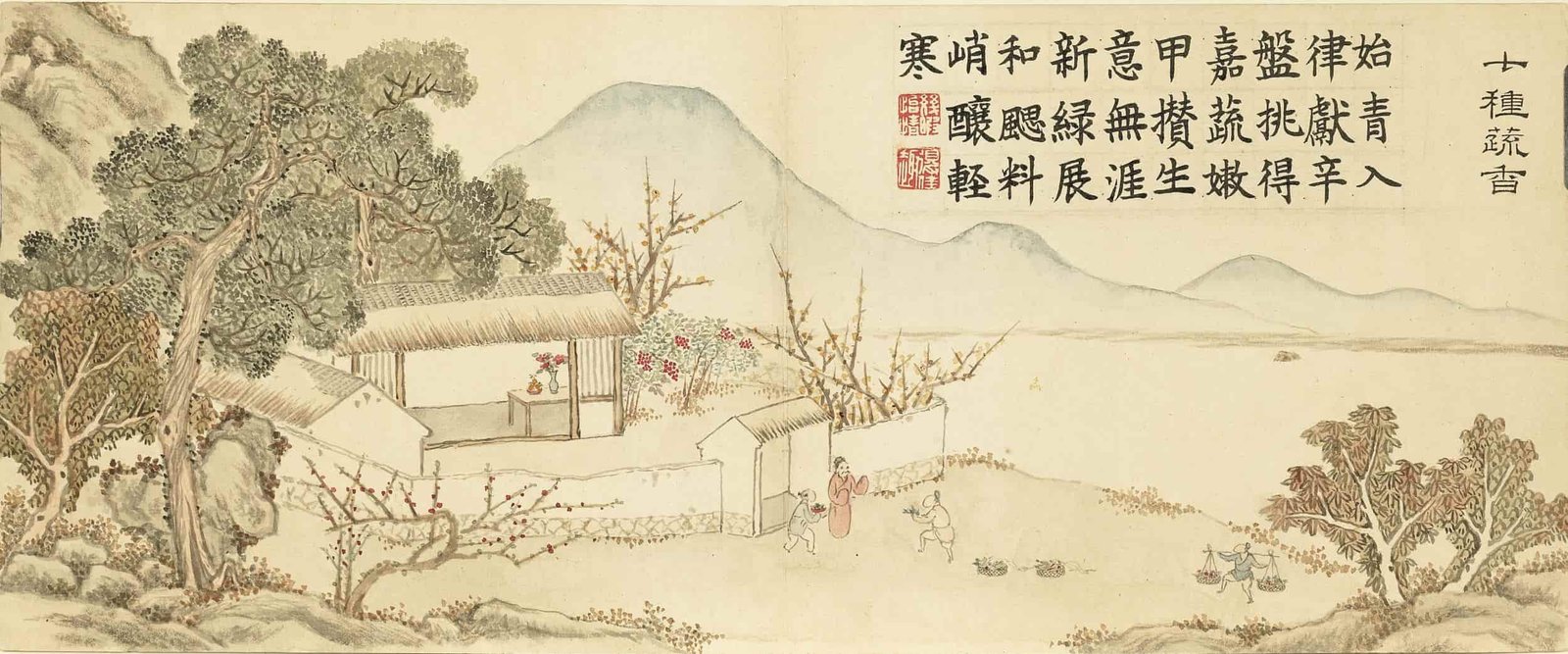
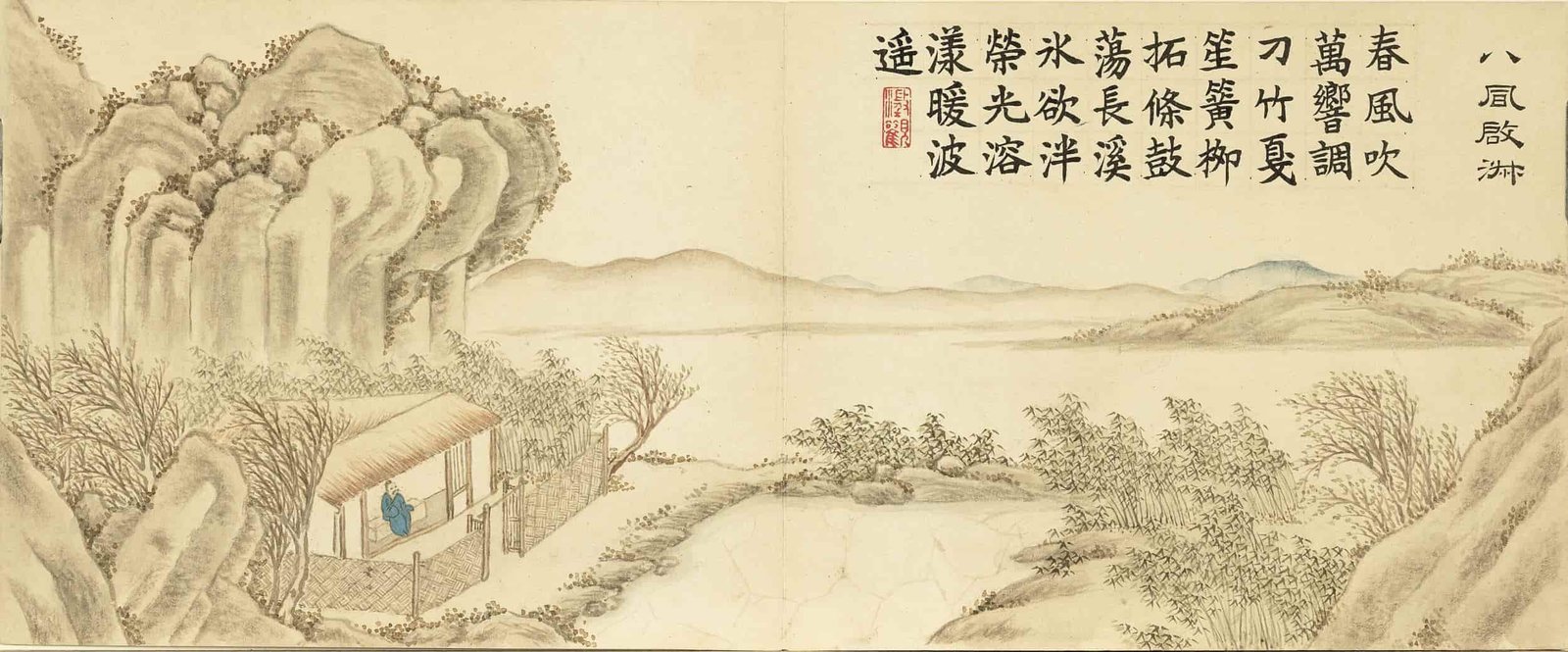
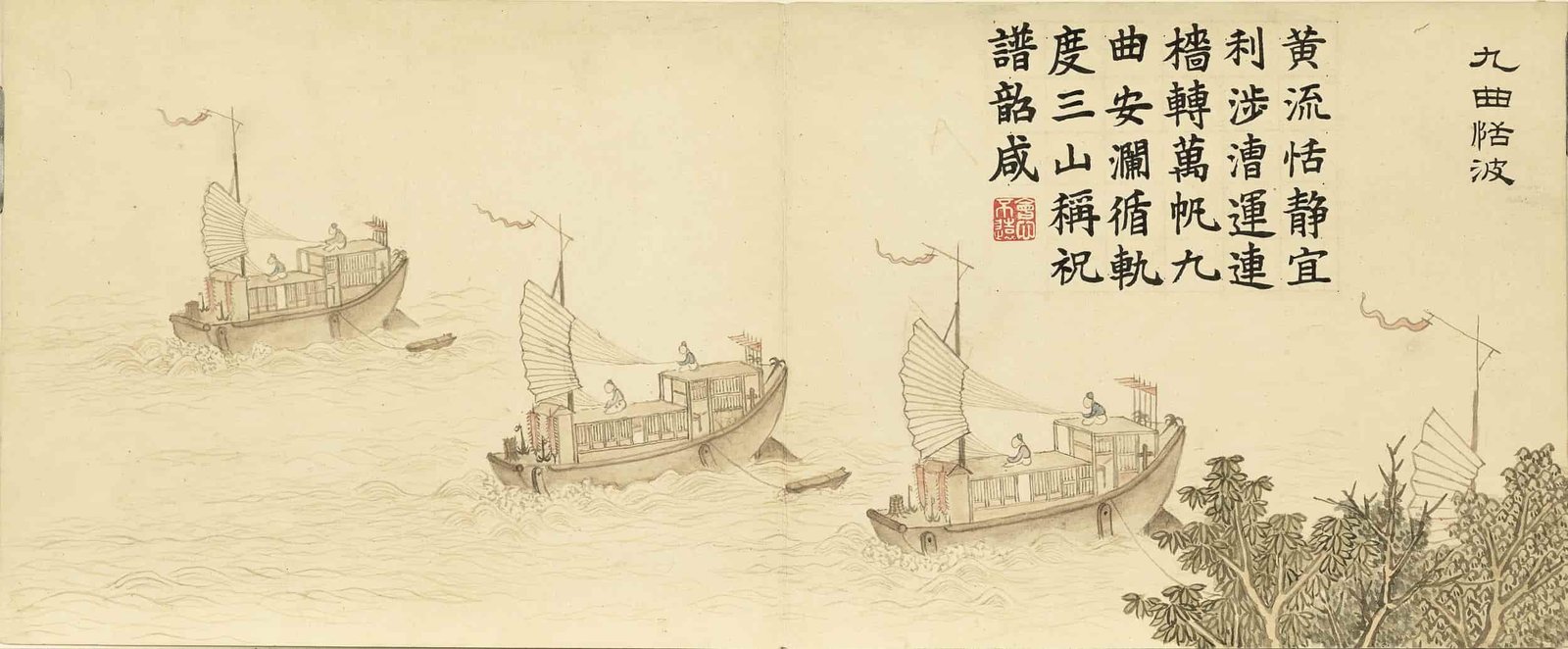
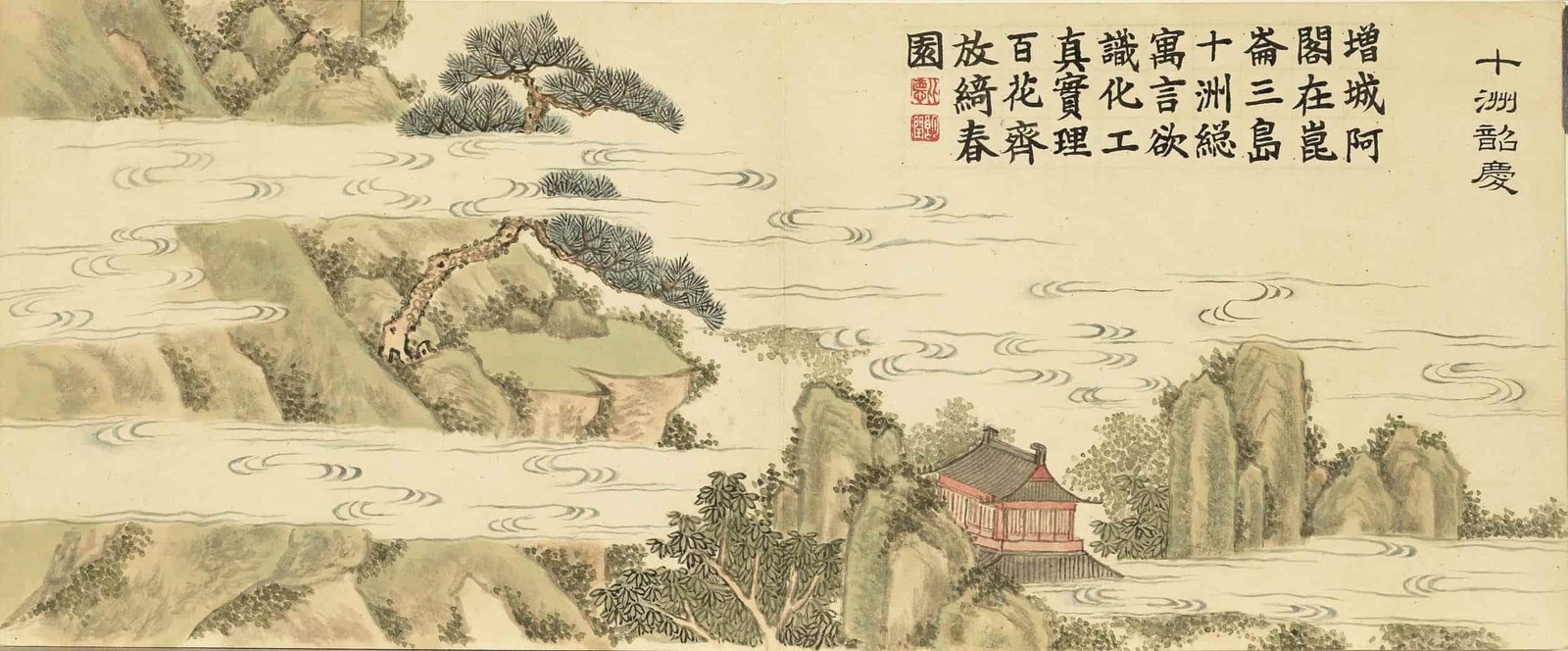
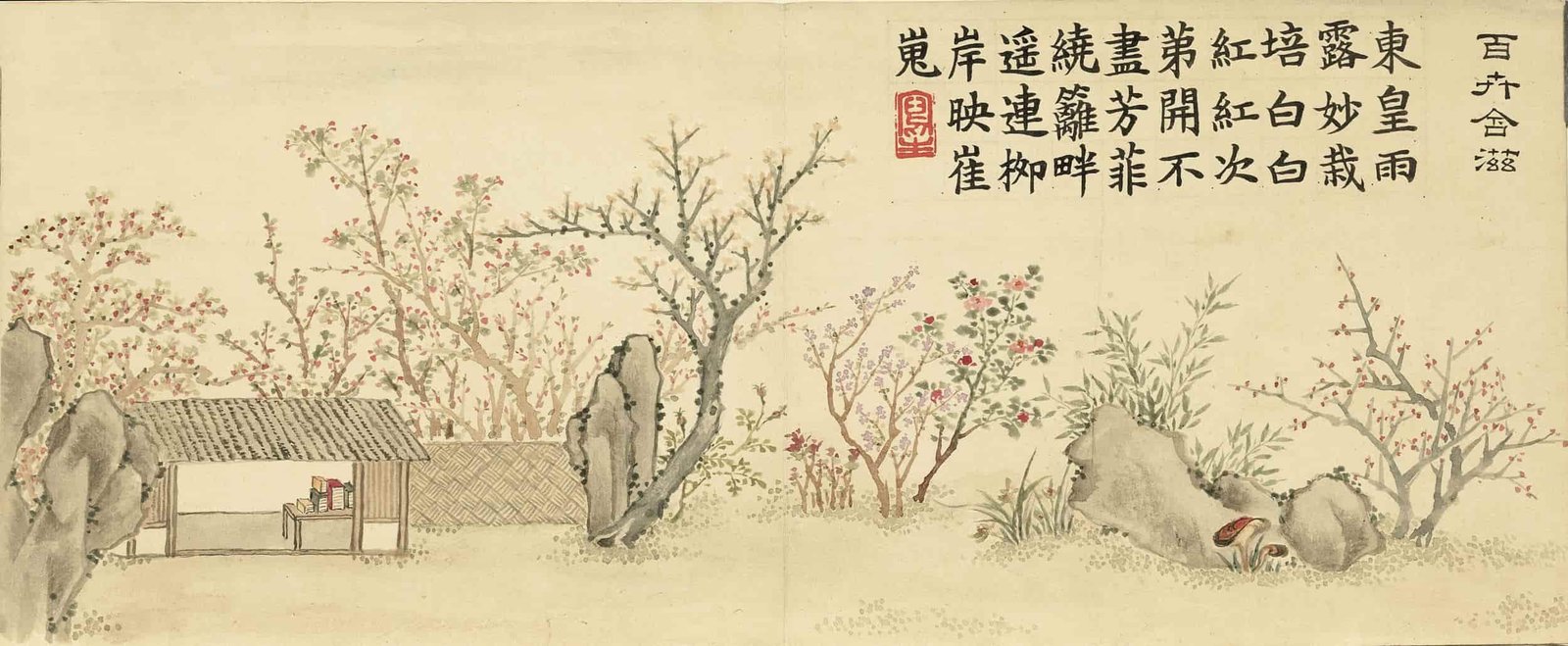
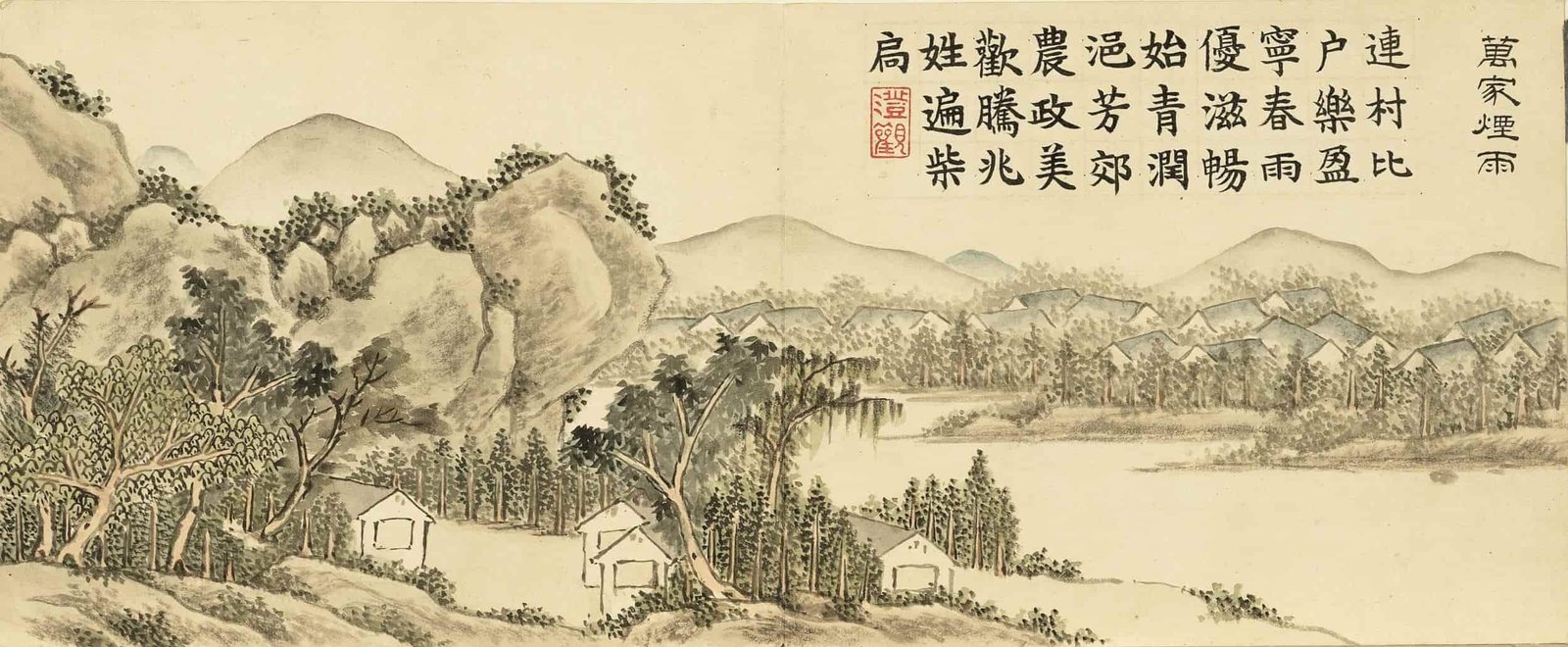
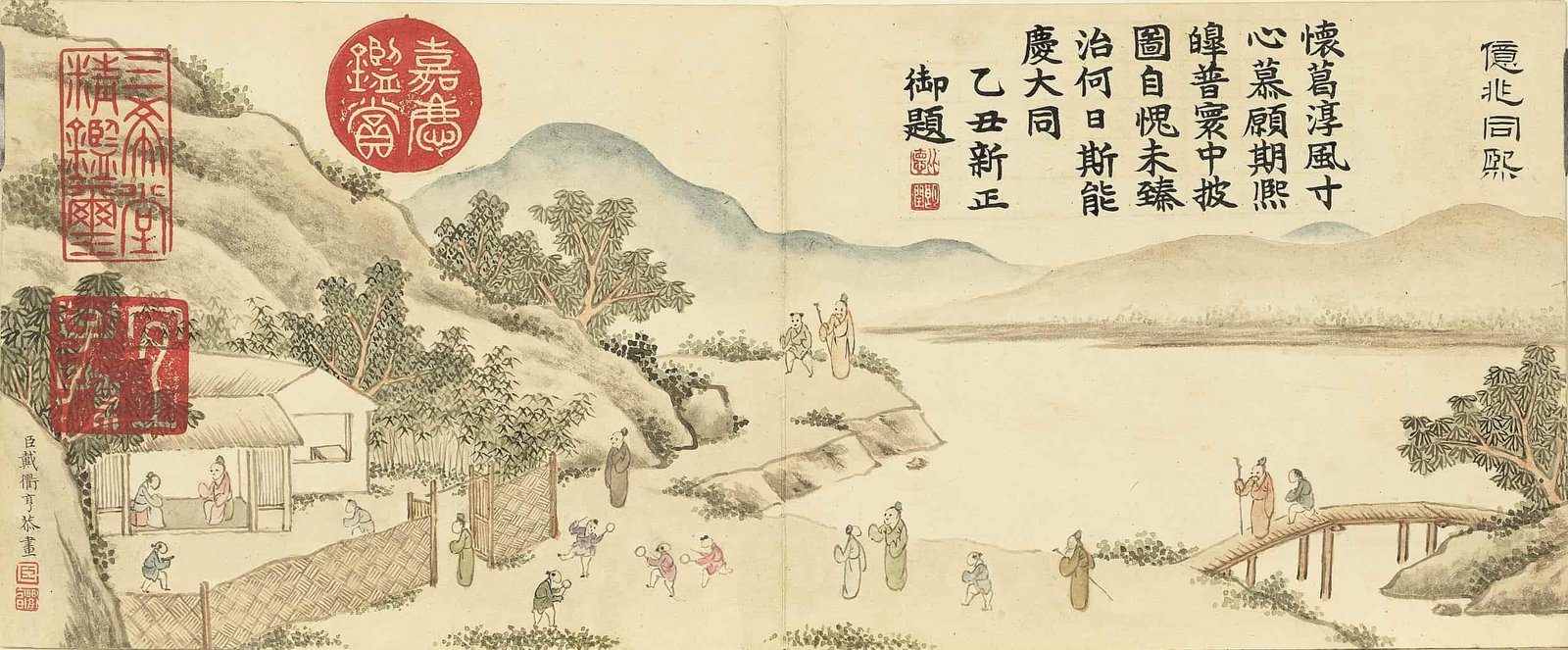
评价
目前还没有评价